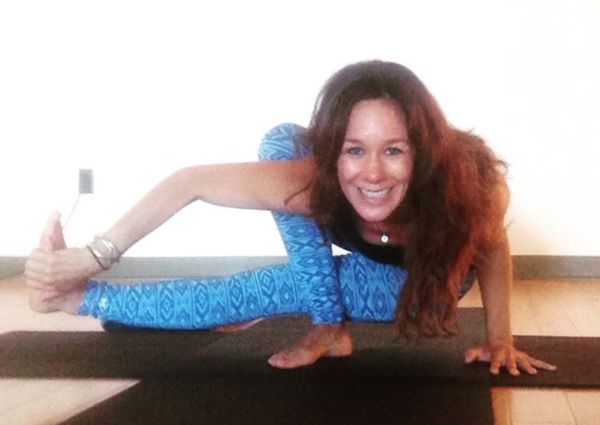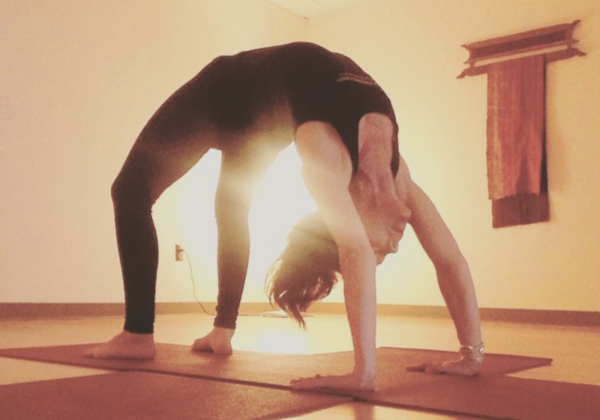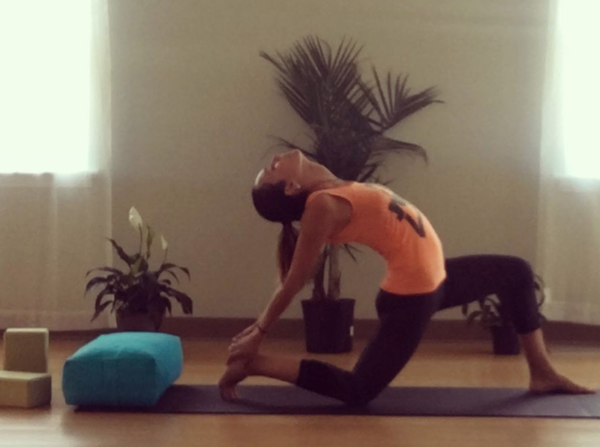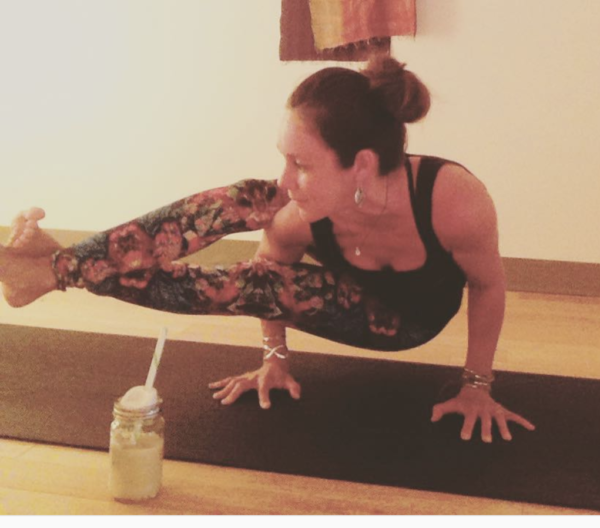I’ve been thinking about taking a yoga class, but every time I look for one, I end up being confused about what type would be best for me. I don’t want to do yoga with goats (as cute as they are) and I don’t want to start out with something too strenuous.
To help me narrow down some choices, I asked Lauren Keiser, director of the yoga program at Jade Integrated Health in Portland and Brunswick, Maine, for some expert advice. Here’s what she had to say about six of the most popular yoga practices in the greater Portland area.

There is no doubt that yoga is good for you, the benefits are truly abundant. As an experienced yoga teacher and practitioner, I have personally experienced the rewards of a consistent yoga practice. Yet, browsing the spectrum of classes and schedules in our community can leave me wondering, “Which class do I want to take?” And if this question comes from a veteran of yoga, where does the newcomer go?
It can be overwhelming to navigate what class is right for you when we’re wondering what’s the difference between Anusara and Ashtanga, hot yoga, and Hatha?
To shed a little light and hopefully help you find a yoga class, let’s take a look at some of the classes we come across in our Maine yoga community:
Lauren Keiser, Yoga Instructor
Vinyasa
Vinyasa (“vin-yah-sah”) is a Sanskrit word for a phrase that refers to a gradual progression or a method in which movements form a flowing sequence in coordination with the breath. Vinyasa classes are known for their fluid movement.
Vinyasa teachers sequence their classes to smoothly transition from pose to pose, with the intention of linking breath to movement. It’s important to note that no two vinyasa classes are the same, the classes will vary each day and with every teacher, I like to think that the participants guide the teacher as community forms.
Hatha
Translated literally, Hatha means forceful or willful. Hatha yoga refers to any type of yoga that teaches physical postures and sequences designed to align your body and calm the mind in preparation for meditation.
Nearly every type of yoga class taught in the West is Hatha yoga as the term serves as an umbrella for more specific styles of yoga. When a class is marketed as Hatha, it generally means you will get a gentle introduction to basic yoga postures. You probably won’t work up a sweat in a Hatha yoga class, but you should end up leaving feeling longer, looser, and more relaxed.
Power Yoga
Power Yoga is a fitness-based practice, focused on the physical body that is intended to be empowering, meaning awake, aware, mentally strong, centered and stable.
It has similar qualities to a Vinyasa or an Ashtanga class, including building internal heat, increased stamina, strength, and flexibility, as well as stress reduction. Power Yoga poses are generally held longer and there are often fewer postures than in a Vinyasa class, which leads to cultivating strength (holding poses) rather than flexibility (through linking poses).
Power Yoga is a well-rounded physical class meant to include all aspects of physical fitness including tone, suppleness, balance, stamina, and cardio conditioning.
Ashtanga
Ashtanga is based on ancient yoga teachings, but it was popularized and brought to the West in the 1970s. Known for its rigorous style, Ashtanga yoga follows a highly-structured and precise sequence of postures, linking every movement to a breath.
It’s similar to a Vinyasa class, however, Ashtanga yoga always performs the exact same poses in the exact same order. It is a sweaty, physically demanding practice intended to build internal heat to purify the body. Make sure to bring water and a towel or invest in a yoga mat towel to lay over your yoga mat.
Iyengar
Iyengar yoga is a practice of precision, a very meticulous style of yoga, with utmost attention paid to finding the proper alignment in a pose. Poses are held for long periods of time and often modified with props to help each student find the proper alignment.
You will find and use blocks, blankets, straps, chairs, and bolsters in an Iyengar studio. By taking the time to settle into each posture students pay close attention to anatomical details with the guidance of their teacher who has undergone a comprehensive training.
There isn’t a lot of jumping around in Iyengar classes, you won’t get your heart rate up, but you’ll be amazed to discover how physically and mentally challenging it is to stay put. If you have an injury or chronic condition, Iyengar is probably your best choice to ensure you get the knowledgeable instruction you need.
Yin
Yin Yoga is a more passive sequence of postures that are mainly seated or supine. Poses are often held for 3-5 minutes (or longer), during which time you are encouraged to relax into the posture and soften the muscles. This targets the deep connective tissues (vs. the superficial tissues) in the body and the fascia that covers the muscles.
Yin yoga requires the muscles to relax around the connective tissue in order to get the stretch. By holding poses longer you have an opportunity to observe the physical sensations that arise. Try a Yin yoga class if you are tired and craving energy or over stimulated and your mind is erratic.
A bit about Lauren
Lauren says her passion for yoga began when she was 12 and discovered a book by B.K.S. Iyengar at a friend’s house. “The spark was lit,” she said. As a child, her practice was as simple as playing on the floor with her grandmother. She went on to develop a deep interest in world religions in college and started practicing yoga in 1998. It began as a curiosity and an escape from the stress that accompanied her work. She soon realized the physical, emotional, and spiritual effects of her yoga practice, transforming her life both on and off the yoga mat.
Lauren studied yoga at Phoenix Rising with Todd Norian, who resided at Kripalu for over 20 years and taught Anusara yoga internationally for 20 years. Her teaching reflects a strong focus on alignment and breath, allowing the breath to become the source of every movement. She began teaching yoga in 2002 so that she could share this powerful practice with others and at the same time, receive great joy in igniting the passion in others. She says she has been an avid life learner in numerous styles including Ashtanga, Anusara, Power Vinyasa, Aerial, Bikram, Prenatal, Restorative and looks forward to discovering Acro Yoga (it combines yoga and acrobatics).
When she’s not on her yoga mat, Lauren spends her time with her two young and active boys and her Bernese Mountain Dog.
For more information about Jade Integrated Healthy, including the yoga program and a class schedule,visit their website. Because of COVID-19, nearly all classes are now online.




Leave A Comment